Bluesky — everything you need to know about this Twitter alternative
Here’s what you need to know about the decentralized social network
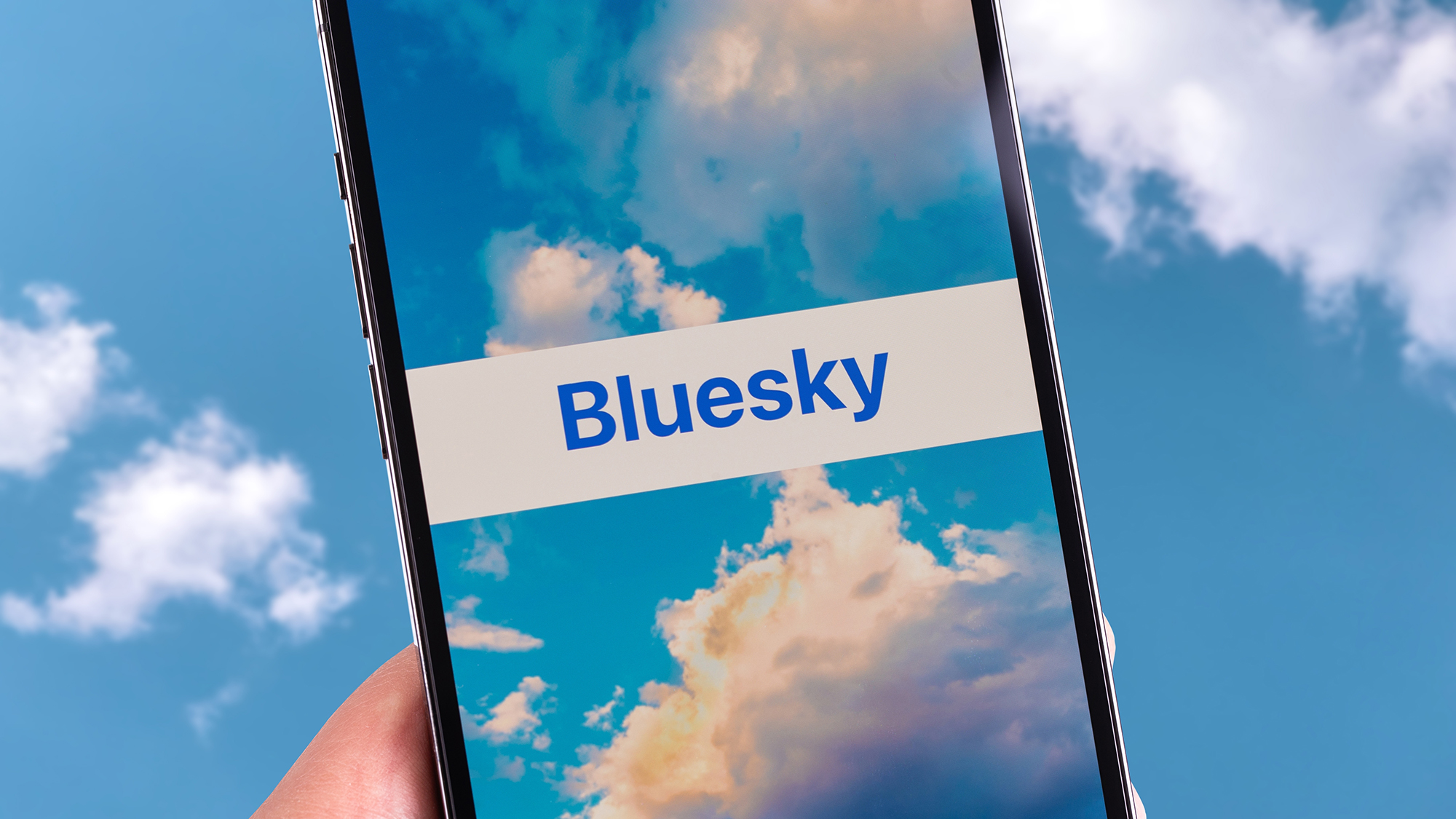
Twitter ain't what it used to be. Since Elon Musk took over, the microblogging site has made some controversial changes, from charging verified users $8 per month for Twitter Blue to surprising users with daily limits for reading Twitter posts.
It's a trainwreck that's got some people wondering whether to jump ship and leave Twitter for another social media site. Several possible contenders for the best Twitter alternatives have cropped up since Musk's takeover, and now one from the likes of former Twitter CEO Jack Dorsey himself is gaining traction. It's called Bluesky Social, an open-source, decentralized social network that feels like a cross between Twitter and Mastodon.
Right now, access to Bluesky is on an invite-only basis, as it's in beta. But it's drawn so much attention in the last few weeks as a potential Twitter rival that invites have started popping up for sale on eBay and other sites. We advise against purchasing these, no matter the site.
We’re here to explain just what this service is all about, including how you can become a part of it. If you’re a frequent Twitter user, you might just feel at home.
Here's what you need to know about Bluesky.
What is Bluesky?
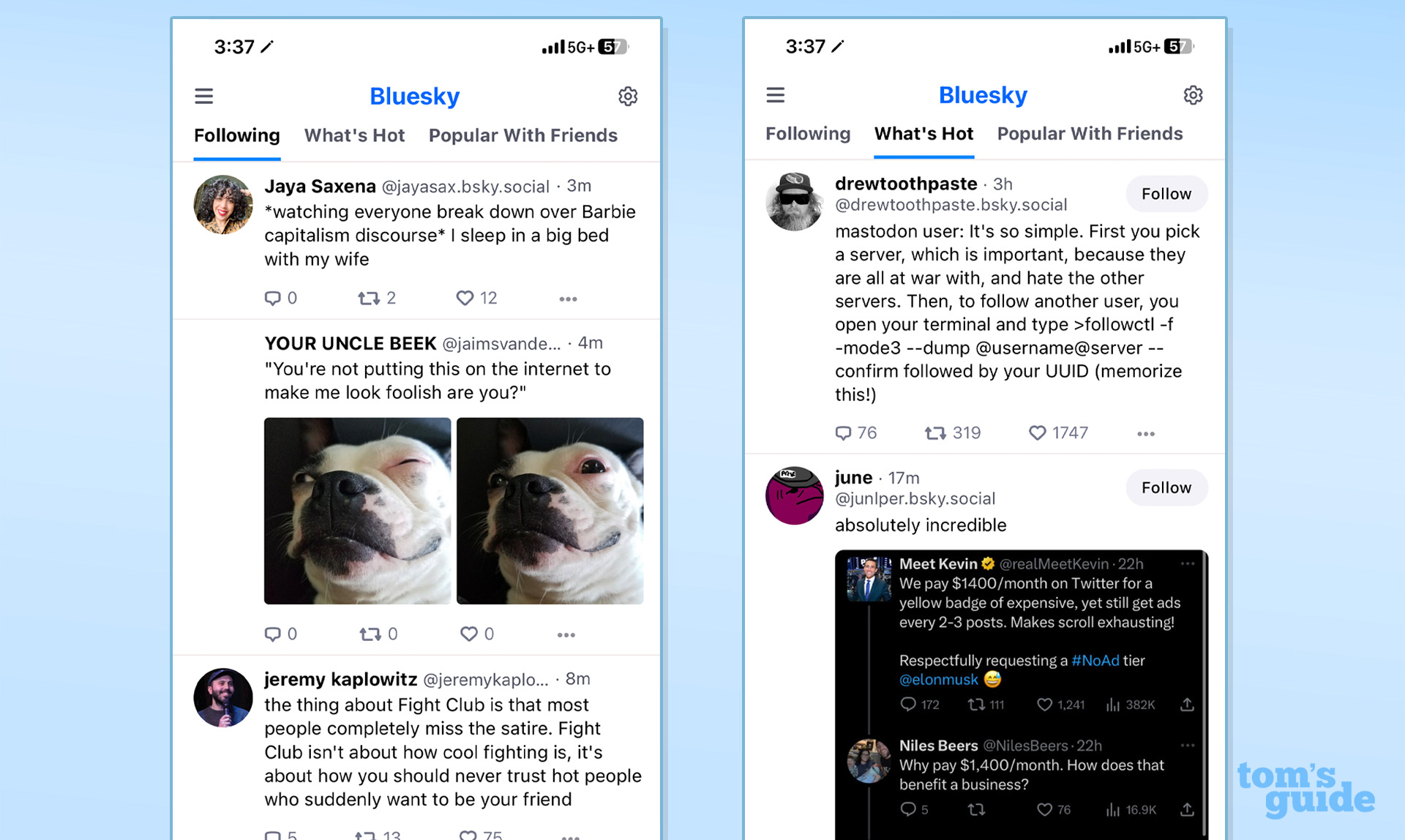
Bluesky is a decentralized, text-based social media platform. We'll get into what exactly that means in a second, but for all intents and purposes, think of it as a social network that offers many of the same core features as Twitter but with the curated communities of platforms like Discord or Mastodon.
You can create short text posts (up to 300 characters) commonly referred to as "skeets," share other people's posts, post photos and reply to other users. Like Twitter, messages posted to BlueSky show up on a newsfeed that your followers and other users can see. Posts can be replied to, liked, shared, reported or shared via other apps.
Sign up to get the BEST of Tom's Guide direct to your inbox.
Get instant access to breaking news, the hottest reviews, great deals and helpful tips.
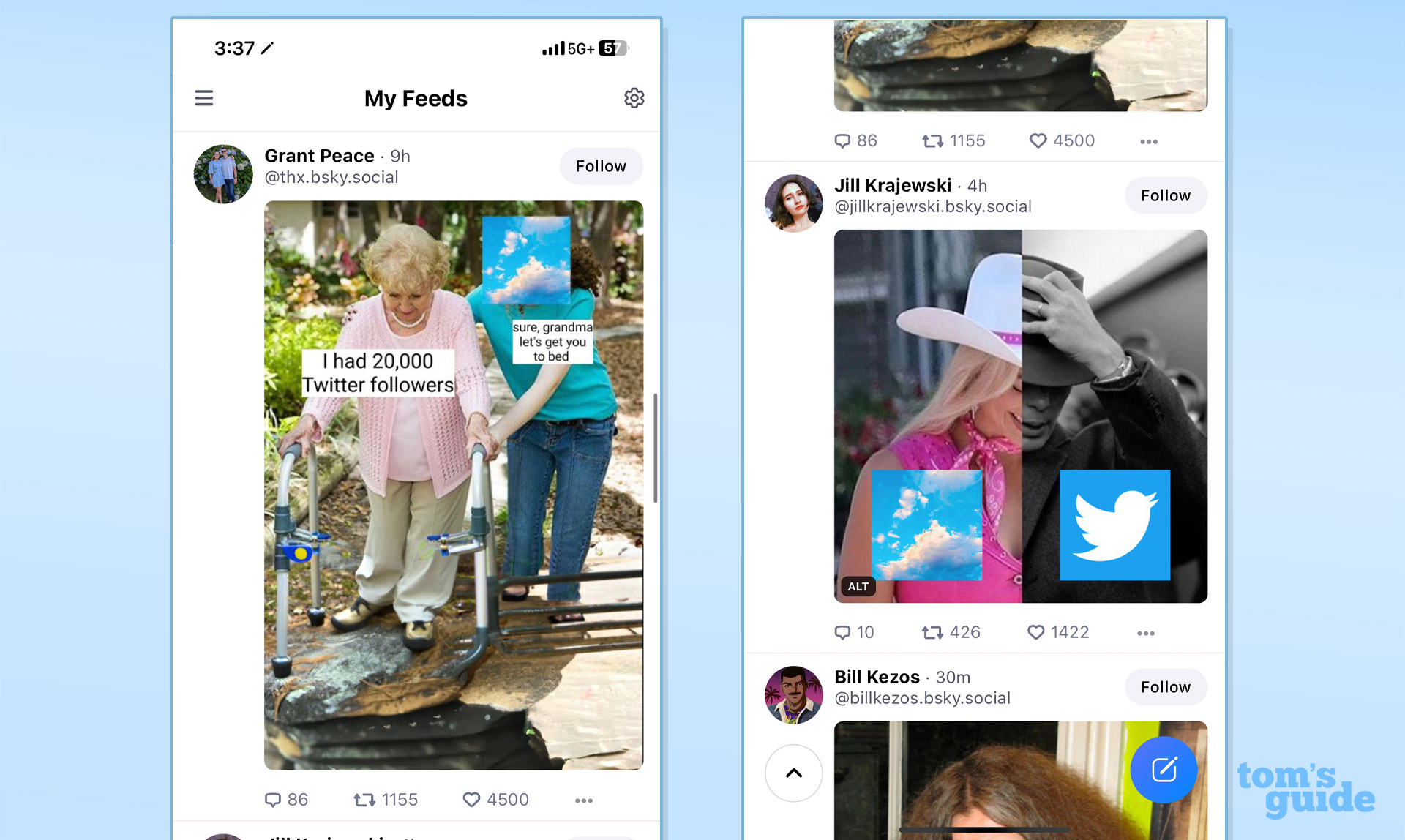
You can search and follow other users, just as you can on Twitter. Their updates appear on your Home "skyline" (comparable to your Twitter timeline). There's a What's Hot skyline, Bluesky's version of Twitter's For You tab, to see what content is being interacted with the most on the platform regardless of whether you follow the poster. You can also create your own custom feed to only see posts from mutals or cat pictures or whatever you want to tailor your social media experience. Just click the My Feeds tab on the left side of the app to add or discover new feeds.
You can access Bluesky using one of the best web browsers through the URL https://staging.bsky.app/. It also rolled out to iOS and Android devices earlier this year.
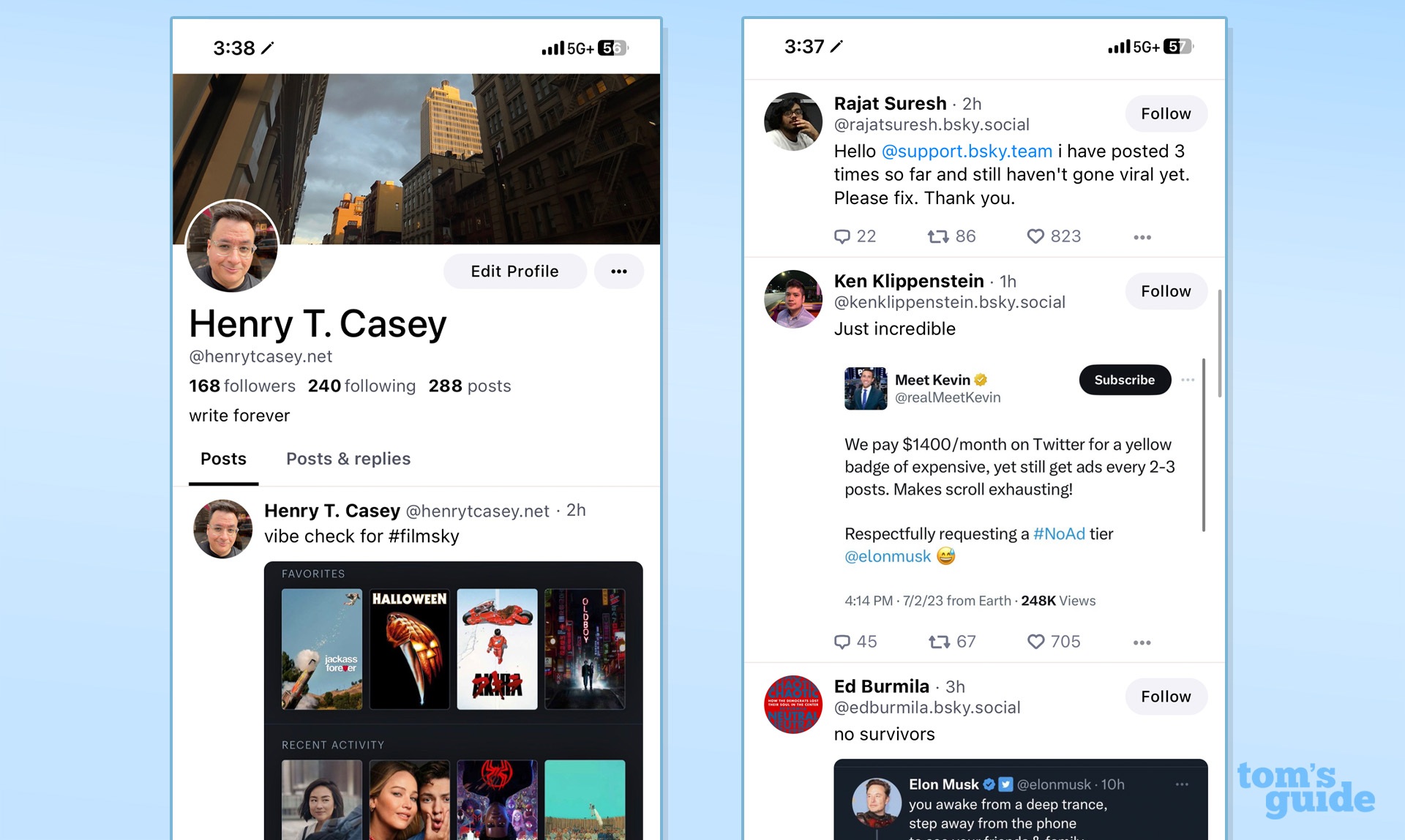
You start by creating your own handle, which initially appears as @username.bsky.social, as well as a display name that will show up bolded on your feed. If you like, you can use a custom domain name as your username, instead of sticking with the default bsky.social (Tom's Guide managing editor Henry T. Casey uses @henrytcasey.net, as seen above). Each user profile contains exactly what you'd expect: a profile picture, background, short bio, who they're following, and how many followers they have.
Click into the Discover tab at the bottom for suggestions about who to follow. That's also where you'll find the most recently posted Bluesky updates. Since it's still in beta, features are regularly being released or tweaked as the user base grows.
How is Bluesky different from Twitter?
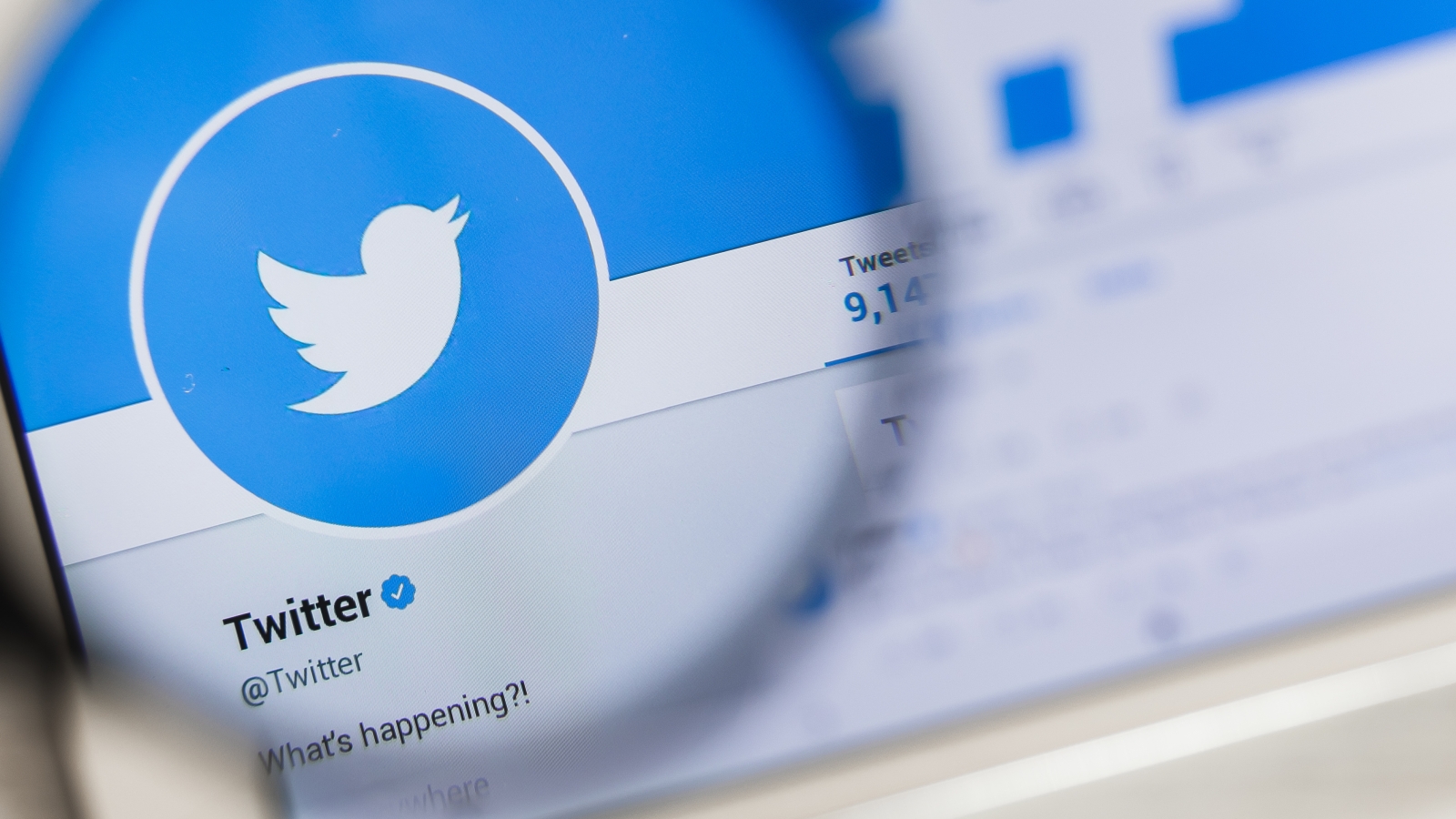
It's no coincidence that Bluesky looks like a bare-bones Twitter. Dorsey came up with the idea Bluesky was based on while he was still Twitter's CEO. Developed in parallel with Twitter beginning in 2019, Bluesky spun out as an independent company in 2021. A service agreement between Bluesky and Twitter was severed the following year.
What makes Bluesky different is its decentralized design. You see, most social media platforms are based around a single organization (Meta for Facebook and Instagram, Bytedance for Tiktok, etc.) that every user is tied to. With Bluesky, there's no one person or corporation with complete control over the platform that determines how you can use it or what tools developers can build for it, known as application programming interfaces or APIs.
If it still seems like a lot to wrap your ahead around, just think of decentralized networks as email. You might use Gmail while your friend has Outlook, but you're still free to message each other regardless; your email address doesn't determine who you can talk to.
It accomplishes this by using an open-source framework constructed in-house known as the Authenticated Transfer (AT) Protocol, which allows different servers to connect to one another to create one decentralized network. User data is stored on independent servers rather than ones owned by Bluesky. And because it's open-source, there's complete transparency. Users can see how Bluesky is built and what is being developed — no surprise limits on reading posts like Twitter kicked off July with.
If it still seems like a lot to wrap your ahead around, just think of decentralized networks as email. You might use Gmail while your friend has Outlook, but you're still free to message each other regardless; your email address doesn't determine who you can talk to. The same goes for users across different servers on Bluesky. Just like its Twitter-like design, its lack of barriers to communication is intentional as well:
“The goal of the AT Protocol is to allow modern social media and public conversation online to work more like the early days of the web, when anyone could put up a blog or use RSS to subscribe to several blogs," Bluesky's FAQ page reads. "We believe this will unlock a new era of experimentation and innovation in social media.”
How do I make a Bluesky account?
Unlike Twitter or Facebook, you won't be able to just sign up for a Bluesky account. While it's still in beta, Bluesky remains invite-only. To join the waitlist, head on over to bsky.app and enter your email.
Once you receive an invite code in your inbox, you can create a new account from the same Bluesky homepage linked above. Select the default Bluesky option as your hosting provider, and enter the invite code. Once you do, you'll be able to sign up for an account using your email and create a password.
Bluesky says it's limiting sign-ups to prevent spammers and bad actors from flooding the platform in the same way we've seen on other social media sites. It plans to distribute invites periodically. New Bluesky users also receive one invite code every two weeks to recruit newcomers to the platform, so that's another avenue to explore if you know anyone who's already signed up.
Who's on Bluesky?
For now, Bluesky remains relatively tiny as far as social media platforms go. It announced it surpassed 50,000 users by the end of April 2023. For context, Twitter reported over 368 million monthly active users worldwide at the end of 2022.
However, there’s a growing, active community already on the platform. The BlueSky app itself has been downloaded 375,000 times since February, Forbes reports, and the waitlist continues to be flooded with sign-up requests.
Notable figures who've already jumped on the Bluesky hype train include Representative Alexandria Ocasio-Cortez (D-NY), model Chrissy Teigen and filmmakers Christopher McQuarrie (Mission: Impossible 7), James Gunn (Guardians of the Galaxy Vol. 3) and Edgar Wright (Shaun of the Dead)..
How does Bluesky moderate content?
Bluesky has a three-pronged approach to content moderation: automated filtering, manual administrator oversight and community labeling. Users can define and apply labels to content or accounts, and then other users can subscribe to these label sets. You can also select "hide," "warn" or "show" for certain content categories ranging from nudity to impersonation.
“Through this approach, we aim to prioritize user safety while giving people more control and transparency over how moderation is done," Bluesky's FAQ reads.
And just like on Twitter, you can block accounts to prevent interaction altogether or mute them to stop seeing notifications from them.
Bluesky invite codes
Each Bluesky code, as we've seen so far, starts with "bsky-social-" and then 10 characters separated by another hyphen. At one point, some users got more codes to give out more frequently, but the current cadence is at least one code every second week.
When many users rushed from Twitter to Bluesky during the first days of July 2023, Bluesky needed to temporarily stop invite codes from working. This was done to try and stop performance issues that were popping up due to increased demand.
Bluesky invite codes should currently work. And, again, so we're clear, we strongly recommend that you do not try to buy Bluesky invite codes off of the internet.
Outlook: Will Bluesky be the new Twitter?
As long as Bluesky's ability to add new users is hampered by its invite-only sign-up process, it will have a hard time seizing on any Twitter tumult.
The other, arguably bigger, issue is a bigger challenger is coming. That would be Meta's own Twitter alternative, Threads. It's yet to debut, but it will (probably instantly) be a titan in the space.
More from Tom's Guide

Alyse Stanley is a news editor at Tom’s Guide, overseeing weekend coverage and writing about the latest in tech, gaming, and entertainment. Before Tom’s Guide, Alyse worked as an editor for the Washington Post’s sunsetted video game section, Launcher. She previously led Gizmodo’s weekend news desk and has written game reviews and features for outlets like Polygon, Unwinnable, and Rock, Paper, Shotgun. She’s a big fan of horror movies, cartoons, and roller skating.
